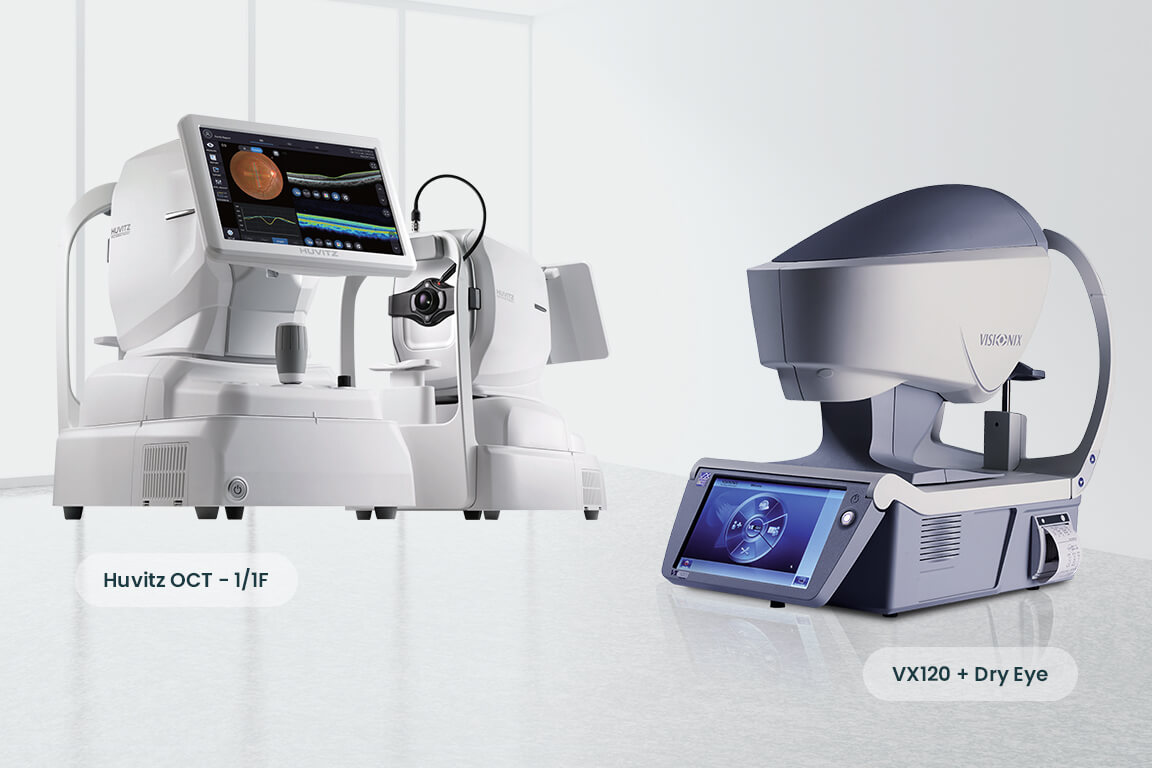Though old-fashioned and vintage have their place, when it comes to optometry and healthcare, the clinic needs to keep up with ever-advancing technology and best practice standards in the interests of patient care. This doesn’t mean you need to jump at every new glitzy model that comes out on the market, but it is worthwhile keeping abreast of new technologies as they emerge. Additionally, take a glance around your practice and consulting room – what message is that huge rip in the examination chair sending to your patients? Here are some factors to consider when deciding if it’s time to update your equipment.
Why Update Your Equipment?
First and foremost, as a practice manager, owner, or optometrist, your priority when it comes to decision-making should always be to enhance or support optimal patient care. This can mean considering purchasing a piece of technology that will allow you to obtain useful data you currently don’t have access to – for example, an OCT to improve your ability to diagnose and monitor retinal pathologies such as central serous chorioretinopathy, glaucoma, and age-related macular degeneration. Another example may be if you’re finding there’s a high demand for myopia control among your patient demographic, so it may make sense to invest in a (a useful discussion about choosing an instrument for axial length measurement can be found in this Myopia Profile article).
In some cases, it can be challenging to figure out what new pieces of equipment you truly need versus updated instruments that are simply a nice-to-have. If any of your pieces of equipment are literally falling apart – multiple lenses of your trial lens kit are cracked, or your phoropter has lost its will to live – this decision is obvious. In other situations, it can be a matter of sitting down and working out whether this upgrade or new instrument is going to:
- Provide you with more or better diagnostic data for improved patient care
- Enable you to offer a wider scope of services that are in demand by the patients you currently see (or, if you’re feeling ambitious, the patients you intend to attract); an example is investing in technology for advanced dry eye diagnostics or dry eye therapy
It can also be worth thinking about whether updating or upgrading any of your equipment – even the consulting room furniture – can have an effect on overall patient comfort and experience. Does your examination chair have a comfortable footrest, or are your patients’ legs dangling awkwardly every time you need to elevate the chair during a slit lamp exam? On that note of examination chairs, perhaps you might even consider investing in a chair unit that is removable, to allow better positioning for your patients confined to a wheelchair.
For some of your patients, yellowing, scratched, or scuffed consulting room equipment is not a concern. For others, it may subconsciously erode their confidence in your clinical ability, whether rightly or wrongly.
3 Factors When Deciding on the Purchase
As mentioned earlier, when considering an upgrade to your practice equipment, it’s wise to start with sifting the nice-to-haves from the need-to-haves. And of course, underpinning all of this is the assumption that these decisions are in the best interests of your patients. However, as every practice owner knows, optometry equipment is generally not cheap, so it pays to carefully think through your next investment.
1. How often do you expect to be using this equipment?
There are several instruments that every optometrist uses with regularity. These baseline diagnostic tests typically include, at minimum, a slit lamp exam (including fundoscopy), refraction (whether with a trial frame, autorefractor, or phoropter), VA testing, and tonometry. Nowadays, many clinicians will also include retinal photography as part of their routine examination, and some may also include routine OCT imaging of the optic nerve and/or macula.
Investing in upgrades of these pieces of equipment that you use at almost every exam makes much more sense compared to purchasing an A-scan biometry instrument when you see a grand total of two myopia control patients a year.
2. Does updating your equipment or purchasing that new device contribute to your practice revenue?
Not all purchase decisions need to revolve around a positive answer to this question. As discussed earlier, sometimes updating your equipment can contribute to less tangible benefits for your practice that don’t directly translate to increased income but are still beneficial nonetheless. Examples of this can include improved patient experience and satisfaction, the elevation of your practice’s reputation, smoother patient flow, time savings, and improved efficiency during an examination.
This being said, given that new equipment is typically not free, it’s still valuable to perform an assessment on the expected return on investment (ROI) to decide whether this purchase is affordable. In some situations, this may lead to establishing a schedule of out-of-pocket costs for tests that aren’t billable to Medicare, such as retinal photography or OCT imaging. For more information about private billing in optometry, read this.
As an optometrist or practice manager, if finances are not your strong suit and abbreviations like ROI boggle your mind, speak to your accountant. Also, bear in mind that some suppliers offer packaged deals of consulting room equipment for a discounted cost. For example, you can get a new ophthalmic chair and stand, digital VA chart, and manual phoropter for just under (excl. GST). In case you want to know more, click here.
3. Who will you purchase from?
Selecting the right supplier can make a huge difference. If you have your eye on a specific model, your choice of supplier will naturally be narrowed down to who supplies this particular instrument. However, if you have more than one option, prioritise the supplier’s reputation for service, even if they are selling the item at a slightly higher price.
Ideal service from a supplier includes:
- Prompt responses to queries
- Prompt action if their product needs repair or maintenance
- Providing a loan unit if your equipment needs to be taken away for repairs or maintenance
- Providing training for clinicians and other practice staff
Summary
Some clinicians and practice owners are constantly tempted to ogle the latest and greatest in optometry equipment, while others would rather wait till their instruments give up entirely before purchasing an update. The best approach is somewhere in between the two extremes, all the while keeping your patients’ best interests in mind. For more useful tips on purchasing new practice equipment, read this.
References
Review of Optometry. How to Shop for New Technology. https://www.reviewofoptometry.com/. 2015. Available at: https://www.reviewofoptometry.com/article/how-to-shop-for-new-technology. (Accessed May 2023).
Eyes on Eyecare. 10 Things to Know Before You Purchase Optometry Equipment. https://eyesoneyecare.com/. 2017. Available at: https://eyesoneyecare.com/resources/10-things-to-know-before-purchase-optometry-equipment/. (Accessed May 2023).




